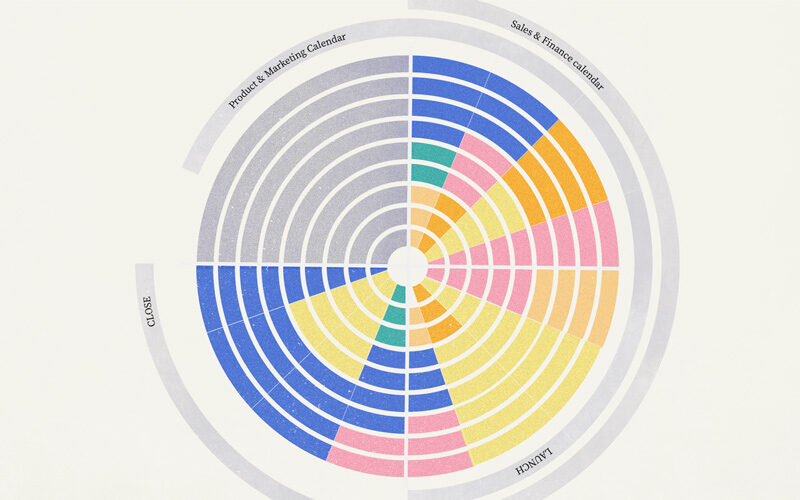There’s a brutality to B2B in that it’s not about joy, and it’s not about comfort.
It’s always about the ROI.
Project management software like Asana and Monday – for all their joyful UX and colour-coding and cute collab tools – exist purely to save companies money in the form of time. Accounting software can have all the elegant UX in the world, but it still has a single purpose: to save companies from costly miscalculations.
Unlike in B2C, you can’t seduce B2B customers with shiny features if it doesn’t save them money. B2B customers don’t impulse-buy (and wouldn’t be able to if they wanted to, thanks to the seven circles of stakeholder approval they need to go through).
Not everything about business is cold and corporate, but B2B selling can be.
For the successful B2B starter, that’s not a problem.
There are often personality types at play. B2Bs tend to attract the archetypally pragmatic and process driven. You’re a problem solver, likely with strong specialised knowledge of an industry. Many B2B entrepreneurs are just as passionate as their B2C counterparts, but it’s usually the professional kind of passion.
You won’t be too bothered about the corporate nature of your work, because unlike your friends in B2C, you’re not having trouble attracting venture capital.
You’re also more likely to be male. In a study of 351 startups founded since 2013, only 2% of female entrepreneurs had founded B2B companies, compared with 12% of men. This may have something to do with their corporate experiences. The study found men got more exposure to strategy and tactics, while women “were coached on navigating internal politics, building confidence, and presenting themselves in the workplace”. They were being taught how to fit in rather than lead.
Why is VC obsessed with B2B?
There are more women in B2C and the heavily person-focused, marketing-led skill sets that drive it. An abysmal 4% of VC funding that goes to female-only founding teams. Does VC have a bias against B2B? Or is it a bias against female founders?
You might think the consumer-facing Facebooks and Amazons of the world generate by far the most value for investors. And you’d be correct. But Cowboy Ventures found that B2B unicorns deliver more returns per dollar invested.
Across the 39 certified horn-holders in their dataset, B2B firms raised an average of USD $138 million in private investment, compared to B2C firms’ $348 million. But the B2Bs were worth an average of 26 times their private capital raised. The top performers (namely Workday, ServiceNow, and FireEye) were worth 60x their raise.
In comparison, B2C firms were worth “just” 11 times their raise.
But while we have averages and safer bets, we have victors. And the world’s biggest victors of investment returns are B2C. Think Amazon, Alibaba, Shopify, Walmart, and eBay.
There is no shortage of investors prepared to take risks. And there’s no shortage of monstrously successful B2C propositions. The above male-founded B2C ventures didn’t turn off VCs. It seems like women are subject to bias on both counts.
If this is the case, investors are missing a trick. People in businesses who make service and software purchasing decisions are increasingly women (41%, in fact), who may respond favourably to female founding teams, boosting the potential of female-founded B2C investments.
Is this why B2C is dropping off?
In recent times, stuff like AI, ML, SaaS, and the cloud have been deployed in force to make things better for businesses. Necessity is the mother of invention, and the pandemic forced technology forward to cater to our complex, remote, hybrid working needs.
It definitely helps to explain why B2B is so hot right now.
But consumer startups have been in decline since long before the COVID years. It seems like only yesterday when apps became a thing, Instagram took over our lives, and AirBnB took over our holidays. But it was – terrifyingly – a decade ago.
Following that heyday of 2009 to 2012, consumers, creators, and marketers alike got used to the expectation of what’s next. But there hasn’t been a what’s next for a while. After the rapid proliferation of Facebook to Instagram to Snapchat to Pinterest to Vine, the flow stemmed. The last social platform to make it big was TikTok, and that wasn’t really new.
B2C tends to create demand where B2B responds to it. So why can’t consumer-centric startups just… create more demand?
Perhaps it’s something to do with the trade-off.
In those innocent days of the early 2010s, rudimentary social apps brought us a joyful way to pass the time. Then our data started getting bought and sold, we got creeped out by the cookies, and there was a noticeable shift in who benefited most. The main beneficiary flipped from ordinary folk to the FAANG.
D2C now faces a jaded consumer base, and a similar sentiment from investors, who are being lured over to the enterprise side by the seeming safety of SaaS.
A case for B2C
B2C is not dead, and will never die. Consumers are still gonna consume.
Granted, it’s harder to identify the next B2C frontrunner. But the majority of European tech companies valued at over $1bn are still consumer businesses.
B2C sales cycles are fast. Growth can be faster.
B2C is limitless. There are only so many ways to innovate within businesses, but in B2C our imaginations can run wild.
Imagination can also counter competition. Unlike B2B, B2C is not winner takes all. You don’t have to outfox or undercut others to win a consumer, because they’re able (and comfortable) to use multiple services.
B2C customers are easier to convert than enterprises with their sticky economic moats, but if you can capture them, you may not have to. Both you and the incumbent can coexist.
Like the moon and the startups who fly to it, everything goes in phases. If B2C businesses (perhaps enabled by transparent marketing and the even more transparent world of web3) can revert consumers to a state of safety, the halcyon days of consumer-led commerce may return.










